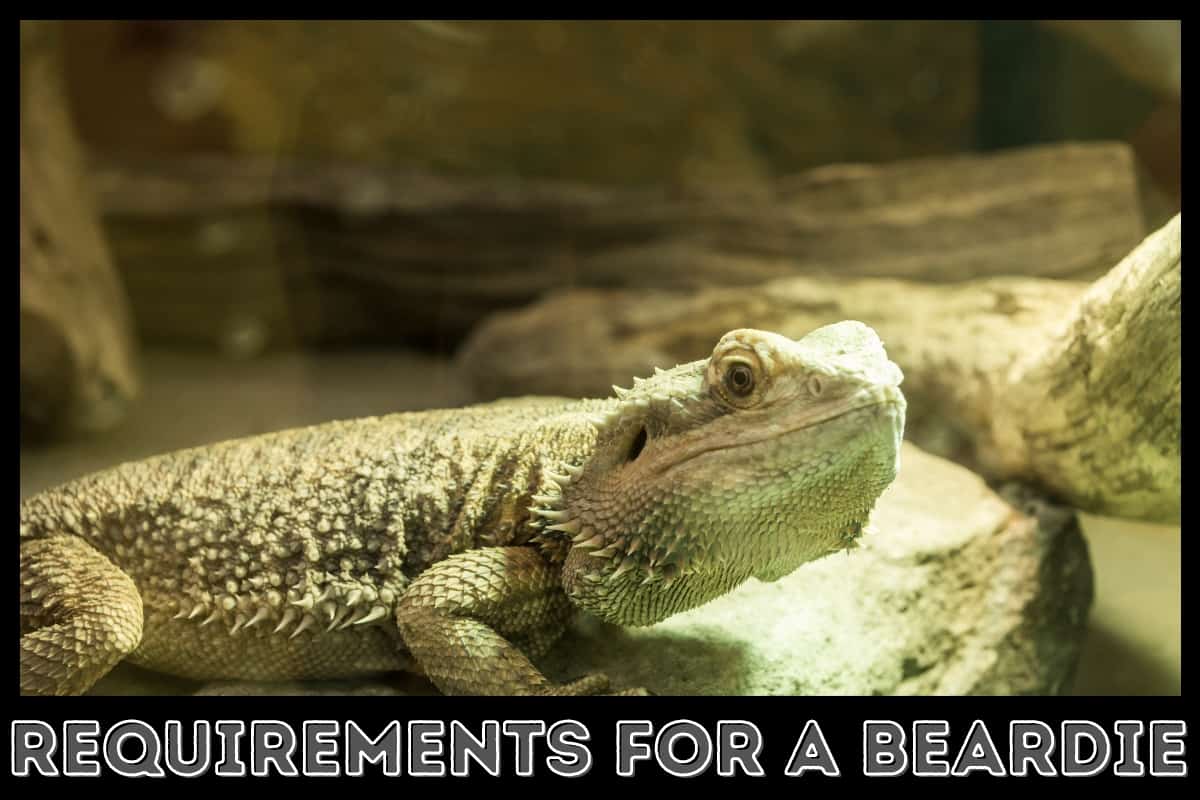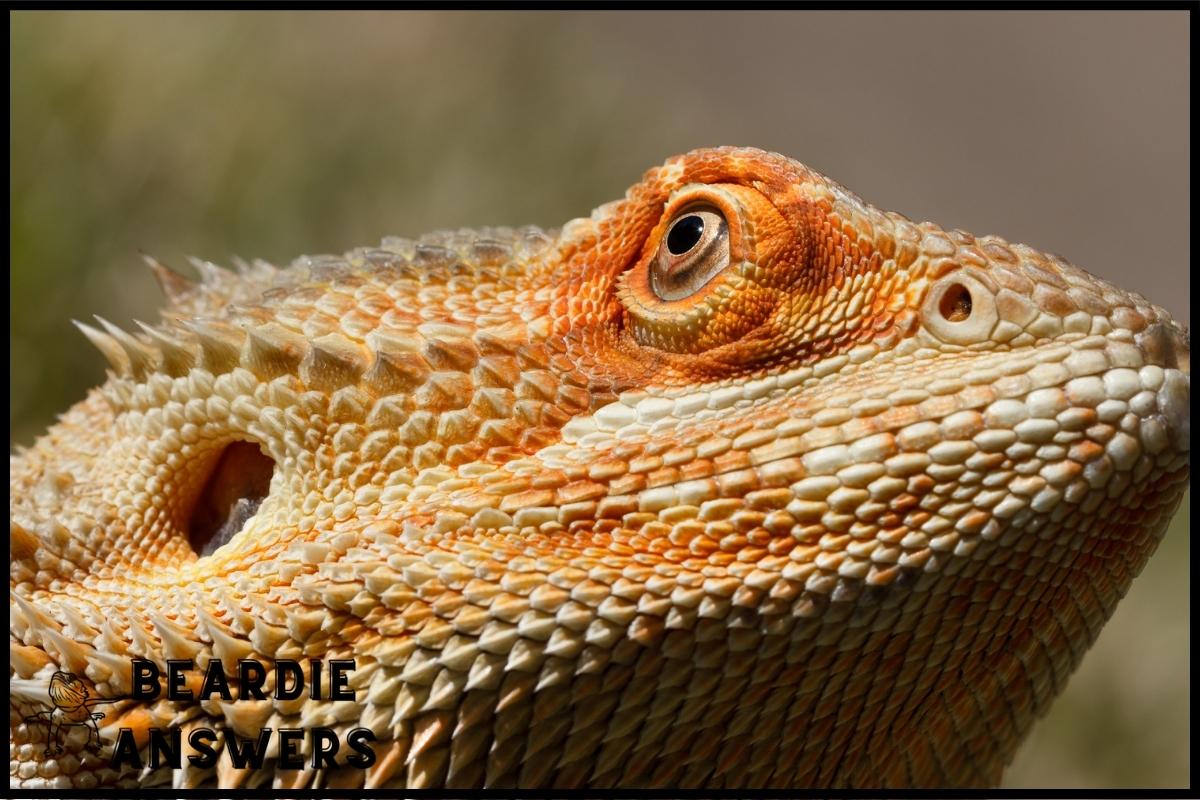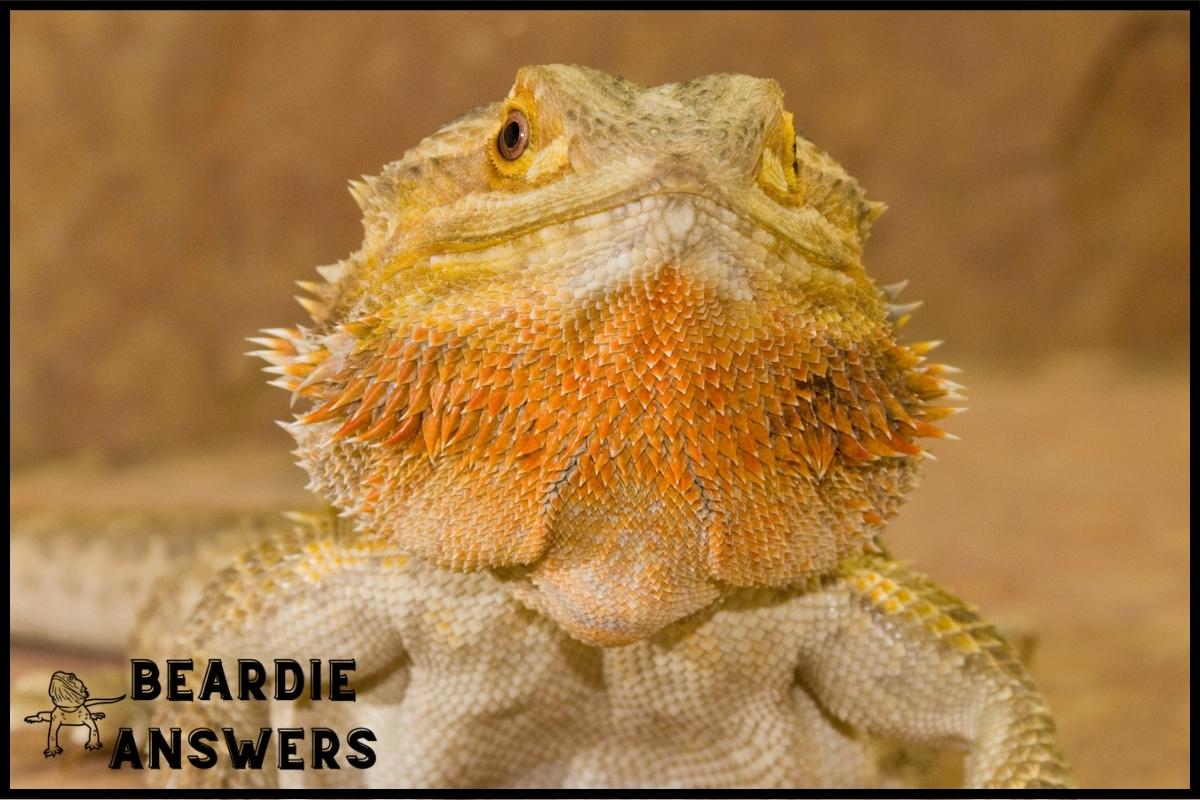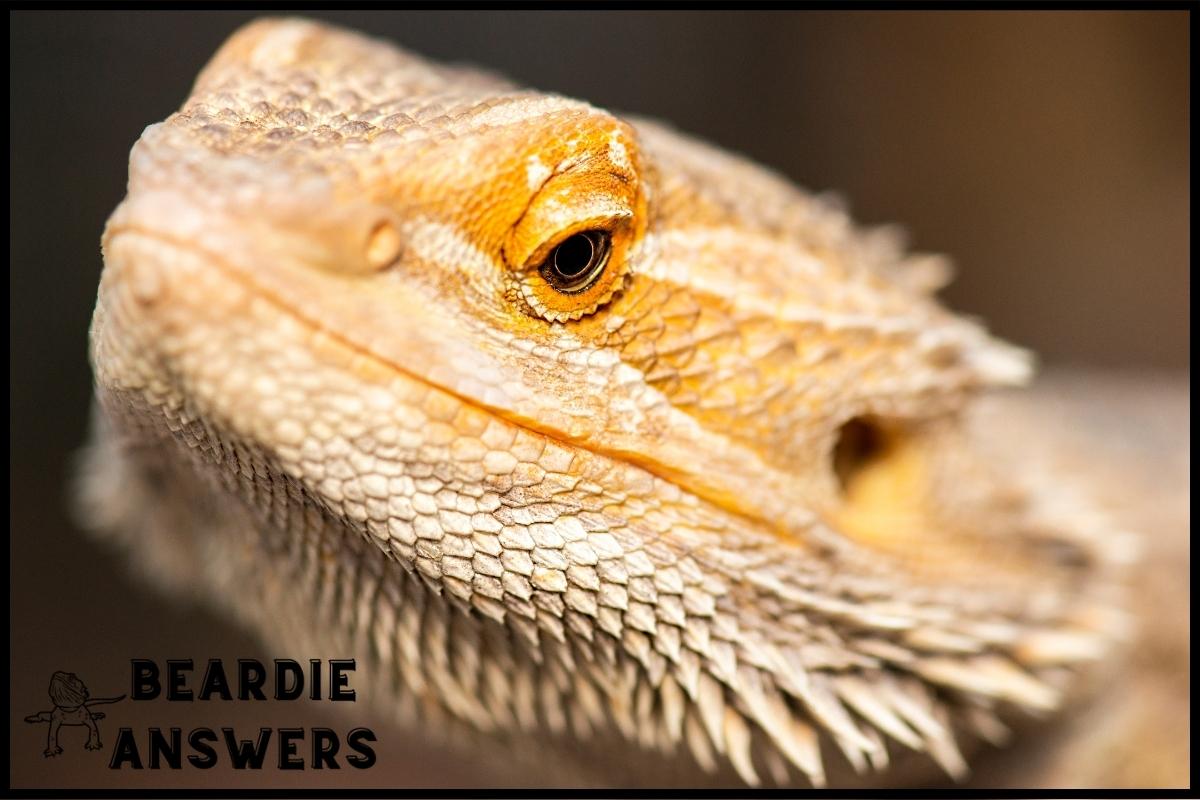Are you considering getting a bearded dragon as a new pet? Congratulations! Bearded dragons are wonderful companions who will bring you joy. We’ve put together a list of everything you’ll need when you first get your new friend to help you get started. Continue reading to learn about the supplies required to keep a happy and healthy bearded dragon.
What You'll Learn
Enclosure
The enclosure you select for your bearded dragon is a critical decision. To ensure that your dragon has enough room to move around and stay healthy, you should aim for a tank that is at least 40 gallons (150 liters).
To keep your beardie healthy and happy, make sure the enclosure has heating elements, basking lights, and UVB lights.
Don’t forget to provide plenty of climbing and hiding branches and rocks for your bearded dragon.
Remember that the larger and more spacious your dragon’s habitat, the better their living conditions.
Size of Enclosure
The enclosure’s size is critical for your beardie’s health and well-being because it must be large enough for them to move around in and comfortable enough for them to live in.
Adult bearded dragons should have a 55-120 gallon enclosure at the very least. Larger tanks will allow fully grown bearded dragons to run around and explore more, allowing them to exercise and thermoregulate more effectively.
Dragons larger than 20 inches should be kept in tanks of at least 100 gallons.
Heating Elements
When it comes to heating elements, make sure your bearded dragon can keep a comfortable temperature.
You’ll need a basking light and UVB lights, but we will discuss those in more detail below.
Zilla’s heat mats are the safest on the market, with a carbon fiber technology that prevents the material from exceeding 113°F.
Basking Lights
Basking lights are critical for providing bearded dragons with the warmth and light they require to thrive.
It is critical to use a high-quality basking bulb, such as a ceramic heat emitter, which produces heat while emitting no UVA or UVB rays.
This type of bulb is excellent for providing needed warmth while emitting no visible light.
UVB Lights
UVB lights are required for all bearded dragons. They require 10-12 hours of simulated sunlight per day, and they should have 8 hours of adequate light during the summer months.
Pet parents should use both UVA and UVB lights to simulate daylight and turn off both the heat lamp and the UVB lights at night.
Reptiles such as turtles, tortoises, bearded dragons, iguanas, and chameleons require UVB light.
Make sure the basking lamp is on the same side as the UVB light and that the UV radiation is supplied by a full-spectrum bulb.
Substrate
The proper substrate is an essential component of your bearded dragon’s habitat. You can choose between tile, excavator clay, ReptiChips, soil, sand, or a combination of the two as a substrate.
Loose substrates such as play sand, alfalfa pellets, bark, mulch, wood chips, hay, or moss should be avoided.
Petco has a wide selection of high-quality bearded dragon substrate to keep your pet’s environment dry and comfortable.
Decor
Decorating your Bearded Dragon’s enclosure can be a lot of fun! Adding rocks, branches, hideouts, and other items to the terrarium will not only make it look cool, but will also provide mental stimulation and exercise for your reptile.
Plants can also be used to provide a naturalistic environment for your pet. Choose non-toxic plants like pothos, ivy, and spider plants that will not harm your dragon.
Hammocks are another excellent way to provide a relaxing environment for your dragon. With the right decorations, you can provide a safe and healthy environment for your bearded dragon.
Branches
When it comes to branches, you have a few different options. Natural-sourced decorations should be sterilized before use, which can be accomplished by baking them at 200-250 degrees for 30 minutes.
Wooden branches are an excellent way for your beardie to exercise and explore their surroundings.
Grapewood branches, oak, maple, driftwood, lilac, and Mopani wood are the best types of branches for your bearded dragon’s tank that you can find for sale.
If you can find the right kind of wood outside, you can make a great piece of decor for your bearded dragon’s tank. But be aware that you cannot simply throw any old branches into the tank; they must also be sterilized before use.
Branches are excellent for adding texture and enrichment to your bearded dragon’s enclosure; they will enjoy climbing them and exploring their natural surroundings!
Hideouts
Hideouts are an important part of bearded dragon care because they provide a safe and comfortable place for your pet to relax. Reptile supplies, such as hideouts that fit snugly in the corner of a bearded dragon tank, are available at almost all pet stores.
You can also find cool hideout pieces like Zoo Med’s Mopani Wood Terrarium Accents or Tfwadmx Reptile Log Hideaway online or at your local pet store.
Rocks
Rocks, in addition to branches, are an excellent addition to your bearded dragon’s tank. Any rocks used should be placed on the floor and should be sourced naturally before being sterilized.
A basking rock is something you can put in your bearded dragon tank to provide a specific area for your pet to soak up the heat and bask in the sun.
You can also get basking ramps for your beardie, which provide a fun way for them to climb up and explore their tank.
Bearded dragons enjoy exploring, and having different levels in their tanks facilitates this! A good pile of rocks is a treat for a bearded dragon, so include some in your tank setup.
Food and Water Bowls
When you set up their enclosure, make sure you provide them with fresh, clean water every day, as well as a variety of “gut loaded” fruits and vegetables to ensure they get the proper nutrition. Don’t neglect cleaning the bowls! They should be cleaned daily.
Diet
Once you’ve gathered all of the necessary supplies for your new reptilian companion, it’s critical to properly feed your bearded dragon.
As an omnivore, they require a diet rich in insects, vegetables, and fruits. Bearded dragons eat insects such as crickets and Dubia roaches, as well as leafy greens such as dandelion greens and other vegetables. Food should be served in bite-sized pieces no larger than the distance between their eyes.
To ensure that your bearded dragon is getting all of the nutrients it requires, lightly sprinkle calcium powder (calcium gluconate) on their food 2-3 times per week.
Gut-Loaded Insects
Gut-loaded insects are critical for providing your bearded dragon with essential nutrients and minerals.
Gut loading entails feeding a nutrient-rich diet to the insects several hours before feeding them to your dragon. To ensure that your lizard gets everything he needs, you must add vitamin and mineral supplements to the insects.
It’s also important to rotate the insects you feed your dragon so he gets a variety of nutrients.
Crickets, for example, are high in calcium, while mealworms, superworms, and waxworms should be given in moderation.
Vegetables
A bearded dragon’s diet should be similar to what it would eat in the wild, which includes a variety of chopped vegetables, meat, fruit, greens, and weeds.
Before feeding, any greens, vegetables, or fruits should be cut into bite-size pieces. Vegetables should account for 25% of a young bearded dragon’s diet and 75-80% of an adult’s.
Kale, collard greens, mustard greens, bell peppers, squash, and cactus pad or prickly pear are all popular vegetables.
You can also give them limited amounts of fruit as a snack on occasion.
Various Care Guide Books
Aside from the necessary items for a bearded dragon’s enclosure, various care guide books can help you learn the basics of caring for your pet.
Two of the best book are:
- The Bearded Dragon Manual, 3rd Edition: Expert Advice for Keeping and Caring for a Healthy Bearded Dragon (CompanionHouse Books)
- Bearded Dragon Care Guide: A Step-by-Step Guide on the Caring, Feeding, Housing, Handling, and Even the Health Issues of Your Beardie.
These books provide detailed information on proper diet and nutrition, heating elements and UVB lighting requirements, substrate and decor ideas, and even health issues that you may encounter. With these resources at your disposal, you can be confident that your bearded dragon is receiving the best possible care.
Key Points
- One of the most important things to consider when getting a bearded dragon as a pet is an enclosure. A tank of at least 40 gallons (150 liters) is recommended to ensure that your dragon has enough space to move around and stay healthy.
- Heating elements, basking lights, and UVB lights, as well as climbing and hiding branches and rocks, should be installed in the enclosure.
- The size of the enclosure is critical for the health and well-being of your bearded dragon, with the minimum appropriate size being 48″ x 24″ x 24″, but larger tanks are recommended for adult dragons.
- Heating elements, basking lights, and UVB lights are all required for a bearded dragon to thrive by maintaining a comfortable temperature and providing the necessary warmth and light.
- A substrate, food, water, and a hiding place are also required, as is regular cleaning and maintenance of the enclosure.

Hi! My name is Bryan, I am the “one behind the words” here are BeardieAnswers.com. I believe that providing quality care and nutrition is the best way to ensure the health of your pet. Every beardie is special and deserves the best care and attention. If you have questions about your bearded dragon, please don’t hesitate to ask! View My Full Author Page




